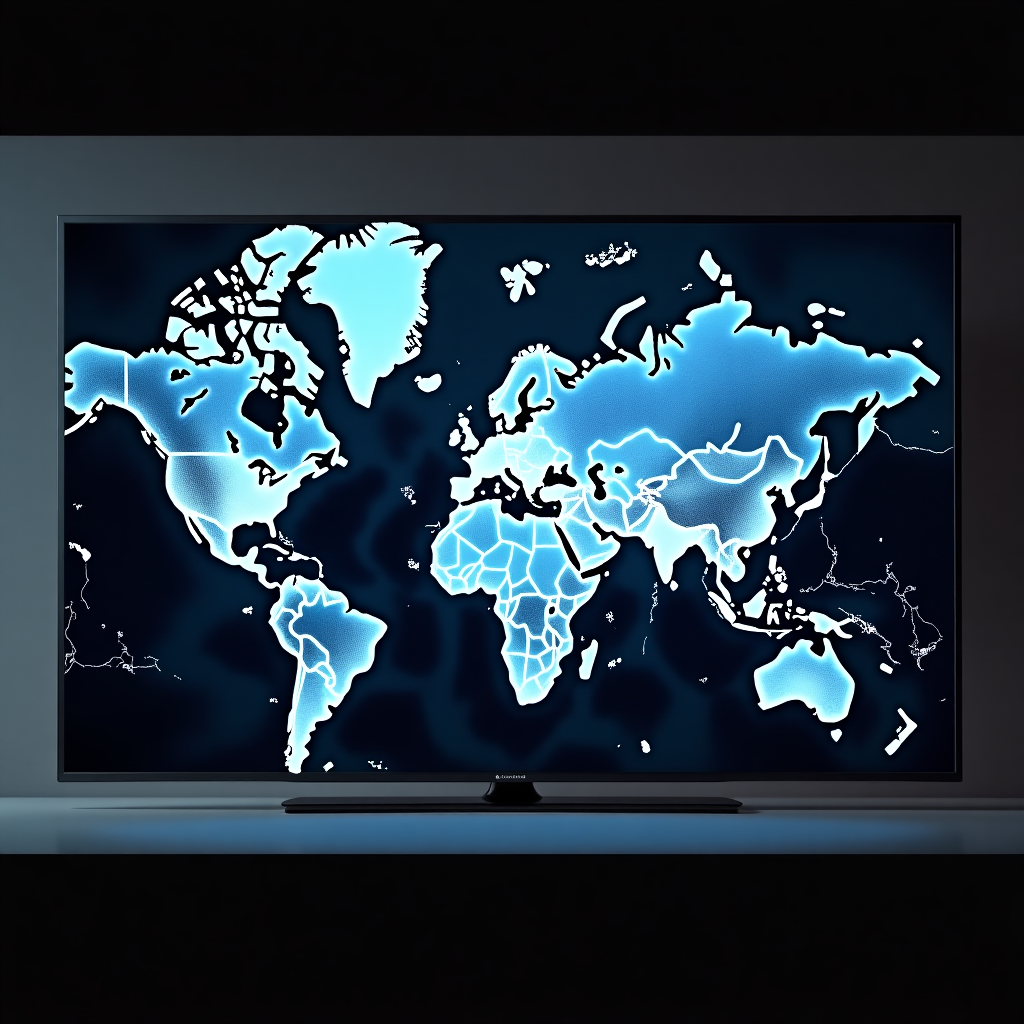The way people consume media has drastically evolved over the past few decades, with one of the most significant changes being the rise of IPTV (Internet Protocol Television). IPTV is changing the television landscape, offering viewers a more flexible, convenient, and cost-effective way to access content. As traditional cable and satellite TV services face increasing competition from streaming platforms, IPTV is increasingly becoming the go-to option for modern consumers. In this article, we will dive deep into what IPTV is, how it works, its advantages and challenges, and why services like Nordic Prime are gaining popularity in regions like Norway.
What is IPTV?
IPTV stands for Internet Protocol Television, a system where digital television services are delivered through the Internet instead of traditional terrestrial, satellite, or cable formats. It is a method of streaming television content to users via their internet connection, typically using a broadband connection. IPTV differs from traditional TV because it uses the internet to stream content rather than relying on radio frequency signals, which means you can access TV shows, movies, and even live sports events over an internet connection.
With IPTV, users can access content on a variety of devices, including smart TVs, computers, tablets, and mobile phones. This accessibility is one of the key reasons why IPTV is growing in popularity among modern consumers.
Types of IPTV Services
IPTV can be divided into three main categories:
- Live TV Streaming: This is the most common form of IPTV and allows users to watch live broadcasts of channels, much like traditional television. However, the content is delivered via an internet connection rather than over the airwaves. Nordic Prime, for example, offers live TV streaming services tailored to its Norwegian audience, ensuring that users can access local and international channels seamlessly.
- Video on Demand (VOD): This allows users to select and watch content whenever they want. VOD services offer a vast library of movies, TV shows, and documentaries, giving users complete control over their viewing schedule. This is similar to services like Netflix or Amazon Prime Video, but with IPTV, the content is delivered through an internet connection rather than traditional cable.
- Time-shifted TV: Time-shifted TV allows users to watch previously broadcasted content at a time that suits them. Users can pause, rewind, or fast-forward the content, adding a layer of flexibility to viewing schedules. This feature is commonly seen in most IPTV services and enhances the user experience by allowing greater control over content.
How Does IPTV Work?
IPTV operates over an internet connection rather than through conventional radio frequency signals or satellite connections. The process involves three key components:
- Content Delivery: IPTV relies on streaming servers that store and send television content through the internet. These servers encode the content into digital signals and deliver it through a broadband network, such as fiber-optic connections or DSL (digital subscriber line) networks.
- Middleware and IPTV Set-Top Boxes: Middleware is software that connects the IPTV servers to your device (smartphone, tablet, or TV) and ensures that content is displayed correctly. Additionally, many IPTV services offer set-top boxes, which are devices that decode IPTV signals and display them on a television screen. These set-top boxes typically allow users to access live TV, VOD, and even interactive features like pause, rewind, and fast forward.
- User Device: The final component is the device the user accesses IPTV content on. This could be a smart TV, smartphone, tablet, computer, or specialized IPTV box. Through an app or dedicated software, users can access a range of content from their preferred IPTV provider, such as Nordic Prime.
Benefits of IPTV
There are numerous advantages to using IPTV over traditional television services. These benefits contribute to the growing popularity of IPTV platforms like Nordic Prime in various regions, particularly in countries like Norway.
1. Convenience and Flexibility
IPTV provides users with flexibility in how they consume television content. Unlike traditional cable or satellite services, which require users to tune in at specific times, IPTV allows for on-demand viewing. With IPTV, users can access a wide range of content whenever they want, pausing, rewinding, and fast-forwarding as needed. Additionally, IPTV allows you to watch TV on multiple devices, whether you’re at home on your TV or on the go using a mobile device.
For Norwegian users, services like Nordic Prime offer access to live channels, video-on-demand content, and a variety of local Norwegian shows, all available at the user’s convenience.
2. Cost-Effectiveness
One of the most appealing aspects of IPTV is its affordability. Traditional cable or satellite TV often comes with high setup fees, monthly subscription costs, and additional charges for premium channels or packages. With IPTV, however, users typically pay a subscription fee for access to a wide array of channels and content. Moreover, many IPTV services, like Nordic Prime, offer subscription options that are more budget-friendly compared to conventional television services.
Additionally, IPTV removes the need for expensive hardware like satellite dishes, and the services are typically easy to install, which further reduces costs.
3. Variety of Content
IPTV services offer a wider variety of content than traditional TV. Services like Nordic Prime offer a range of Norwegian content, including local channels, movies, news, and sports. Additionally, users can access international channels and on-demand movies and shows from across the globe. IPTV platforms offer everything from live TV broadcasts to extensive libraries of movies and TV shows that cater to diverse interests.
4. Interactive Features
Many IPTV providers, like Nordic Prime, incorporate interactive features that go beyond traditional TV. These can include features like video-on-demand, catch-up TV, and the ability to pause, rewind, and fast-forward live broadcasts. These features give users greater control over how they watch content.
In some cases, IPTV services also allow viewers to interact with their programming by voting on live shows, playing games, or engaging with additional content via their mobile device or tablet.
5. Improved Quality
Unlike traditional cable or satellite TV, IPTV services are often delivered in high-definition (HD) or even ultra-high-definition (UHD) quality. This is because the content is streamed via the internet, which can support high-quality streams without the compression issues often seen in traditional broadcast formats. Many IPTV providers, including Nordic Prime, offer HD channels and on-demand content, ensuring an enhanced viewing experience.
Challenges of IPTV
Despite the numerous advantages of IPTV, there are also some challenges that need to be addressed to ensure the best possible user experience.
1. Internet Dependency
Since IPTV relies on an internet connection to deliver content, the quality of your IPTV experience will depend heavily on your internet speed and reliability. If your internet connection is slow or inconsistent, it could lead to buffering, poor video quality, or interruptions during playback.
To enjoy IPTV without interruptions, it is recommended to have a stable and fast internet connection, especially for services offering HD or UHD content. Service providers like Nordic Prime typically provide recommendations for the minimum internet speed required for optimal performance.
2. Geographical Restrictions
One of the challenges of IPTV is that some content may be restricted based on your geographical location. Due to licensing agreements, certain shows, channels, or services may only be available in specific regions. However, many IPTV providers, such as Nordic Prime, cater to regional users by offering local Norwegian content and channels, ensuring that users can access the content they care about.
For international viewers, geo-restrictions may be overcome by using virtual private networks (VPNs), allowing users to access content that is typically unavailable in their region.
3. Legal and Regulatory Issues
While IPTV services are generally legal, some illegal IPTV providers offer pirated content, often at a lower cost or for free. These providers operate outside of regulatory oversight, offering users unlicensed content. This has led to legal issues, with authorities cracking down on illegal IPTV providers. Users need to ensure they are subscribing to legitimate IPTV services to avoid legal complications and the risk of using unlicensed content.
Reputable IPTV platforms like Nordic Prime operate legally and ensure that all content is appropriately licensed and secure.
Why Nordic Prime is a Leading IPTV Service
For those in Norway and beyond, Nordic Prime stands out as a leading IPTV provider. With a focus on affordability, local content, and a user-friendly interface, Nordic Prime offers an excellent IPTV solution for individuals and families who want access to high-quality television content.
1. Tailored to Norwegian Viewers
Nordic Prime offers a range of Norwegian TV channels, including live broadcasts, sports, news, and entertainment programs. Whether you’re looking for local news, popular Norwegian TV shows, or international channels, Nordic Prime provides everything in one place. This tailored service ensures that Norwegian users have access to the content they want, without the hassle of traditional cable services.
2. Affordable Pricing Plans
Compared to traditional satellite or cable TV services, Nordic Prime offers more affordable subscription options, making it accessible to a broader audience. This budget-friendly pricing, combined with high-quality content, makes Nordic Prime an attractive choice for many consumers.
3. User-Friendly Interface
Nordic Prime offers an intuitive interface that makes it easy to navigate through channels, on-demand movies, and other content. The service is designed for both beginners and tech-savvy users, ensuring that everyone can enjoy a smooth and enjoyable viewing experience.
The Future of IPTV
The future of IPTV looks bright, with increasing adoption rates and technological advancements. As internet speeds improve and demand for streaming services grows, IPTV will likely continue to expand and evolve. Services like Nordic Prime are at the forefront of this revolution, providing viewers with more content options, better quality, and greater flexibility.
The evolution of IPTV will also likely include more features, such as 4K streaming, integrated smart home systems, and even more interactive content. As the industry continues to grow, IPTV may eventually replace traditional television in many households, offering consumers the best of both worlds: the convenience of streaming with the quality of traditional TV.
Conclusion
IPTV represents a revolution in how we consume television content, offering flexibility, affordability, and a wide range of programming options. As platforms like Nordic Prime cater to a growing demand for cost-effective and convenient TV solutions, it’s clear that IPTV is here to stay. Whether you’re looking to access Norwegian content or international channels, IPTV offers a modern, streamlined solution for all your viewing needs. By embracing IPTV, viewers can enjoy more control over their content, enjoy improved video quality, and enjoy a more personalized television experience.



